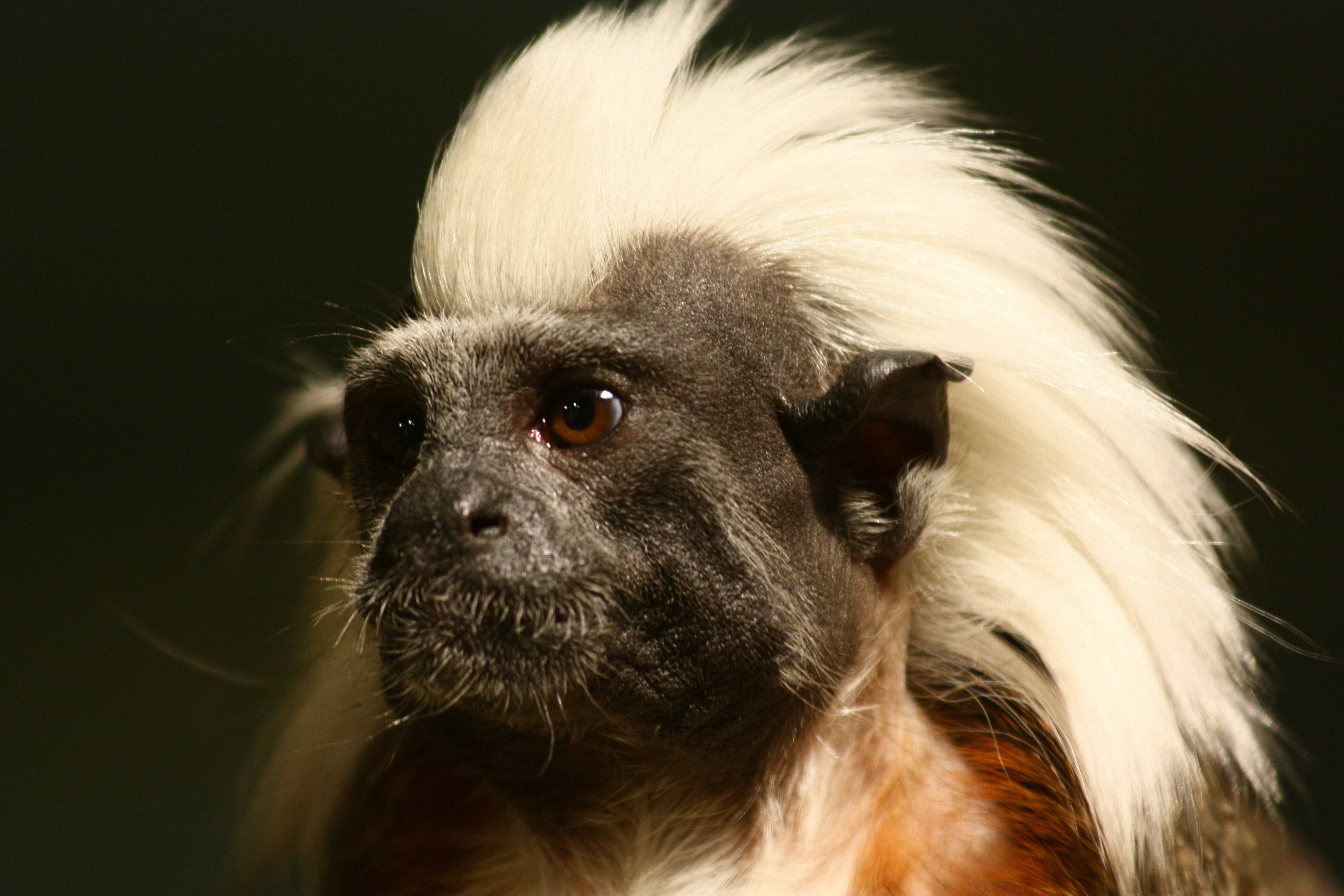|
Saguinus
The tamarins are squirrel-sized New World monkeys from the family Callitrichidae in the genus ''Saguinus''. They are the first offshoot in the Callitrichidae tree, and therefore are the sister group of a clade formed by the lion tamarins, Goeldi's monkeys and marmosets. Taxonomy and evolutionary history Hershkovitz (1977) recognised ten species in the genus ''Saguinus'', further divided into 33 morphotypes based on facial pelage. A later classification into two clades was based on variations in dental measurements. A taxonomic review (Rylands et al., 2016) showed the tamarins are a sister group to all other callitrichids, branching off 15–13 million years ago. Within this clade, six species groups are historically recognised, ''nigricollis'', ''mystax'', ''midas'', ''inustus'', ''bicolor'' and ''oedipus'', five of which were shown to be valid with ''Saguinus inustus'' placed within the ''midas'' group. The review noted that the smaller-bodied ''nigricollis'' group began div ... [...More Info...] [...Related Items...] OR: [Wikipedia] [Google] [Baidu] |
Callitrichidae
The Callitrichidae (also called Arctopitheci or Hapalidae) are a family of New World monkeys, including marmosets, tamarins, and lion tamarins. At times, this group of animals has been regarded as a subfamily, called the Callitrichinae, of the family Cebidae. This taxon was traditionally thought to be a primitive lineage, from which all the larger-bodied platyrrhines evolved. However, some works argue that callitrichids are actually a dwarfed lineage.Naish, DarrenMarmosets and tamarins: dwarfed monkeys of the South American tropics Scientific American November 27, 2012 Ancestral stem-callitrichids likely were "normal-sized" ceboids that were dwarfed through evolutionary time. This may exemplify a rare example of insular dwarfing in a mainland context, with the "islands" being formed by biogeographic barriers during arid climatic periods when forest distribution became patchy, and/or by the extensive river networks in the Amazon Basin. All callitrichids are arboreal. They ... [...More Info...] [...Related Items...] OR: [Wikipedia] [Google] [Baidu] |
Saguinus Oedipus
The cotton-top tamarin (''Saguinus oedipus'') is a small New World monkey weighing less than . This New World monkey can live up to 24 years, but most of them die by 13 years. One of the smallest primates, the cotton-top tamarin is easily recognized by the long, white Sagittal plane, sagittal crest extending from its forehead to its shoulders. The species is found in tropical and subtropical moist broadleaf forests, tropical forest edges and secondary forests in northwestern Colombia, where it is arboreal and Diurnality, diurnal. Its diet includes insects and plant exudates, and it is an important seed dispersal, seed disperser in the tropical ecosystem. The cotton-top tamarin displays a wide variety of social behaviors. In particular, groups form a clear dominance hierarchy where only dominant pairs breed. The female normally gives birth to twins and uses pheromones to prevent other females in the group from breeding. These tamarins have been extensively studied for their high l ... [...More Info...] [...Related Items...] OR: [Wikipedia] [Google] [Baidu] |
Cotton-top Tamarin
The cotton-top tamarin (''Saguinus oedipus'') is a small New World monkey weighing less than . This New World monkey can live up to 24 years, but most of them die by 13 years. One of the smallest primates, the cotton-top tamarin is easily recognized by the long, white sagittal crest extending from its forehead to its shoulders. The species is found in tropical forest edges and secondary forests in northwestern Colombia, where it is arboreal and diurnal. Its diet includes insects and plant exudates, and it is an important seed disperser in the tropical ecosystem. The cotton-top tamarin displays a wide variety of social behaviors. In particular, groups form a clear dominance hierarchy where only dominant pairs breed. The female normally gives birth to twins and uses pheromones to prevent other females in the group from breeding. These tamarins have been extensively studied for their high level of cooperative care, as well as altruistic and spiteful behaviors. Communicati ... [...More Info...] [...Related Items...] OR: [Wikipedia] [Google] [Baidu] |
Saguinus Geoffroyi
Geoffroy's tamarin (''Saguinus geoffroyi''), also known as the Panamanian, red-crested or rufous-naped tamarin, is a tamarin, a type of small monkey, found in Panama and Colombia. It is predominantly black and white, with a reddish nape. Diurnality, Diurnal, Geoffroy's tamarin spends most of its time in trees, but does come down to the ground occasionally. It lives in groups that most often number between three and five individuals, and generally include one or more adults of each sex. It eats a variety of foods, including insects, Exudate#Plant exudates, plant exudates, fruits and other plant parts. Insects and fruits account for the majority of its diet, but exudates are also important. But since its teeth are not adapted for gouging trees to get to the sap, it can only eat exudates when they are easily available. Although a variety of reproductive methods are used, the most common is for a single adult female in the group to be reproductively active and to mate with mul ... [...More Info...] [...Related Items...] OR: [Wikipedia] [Google] [Baidu] |

